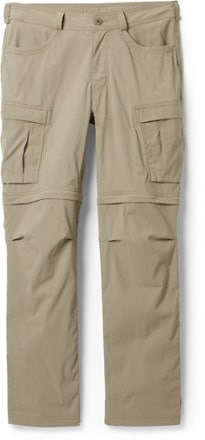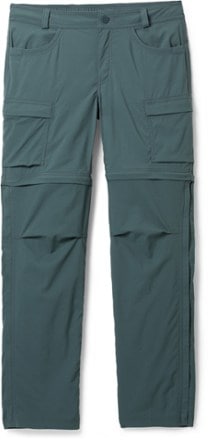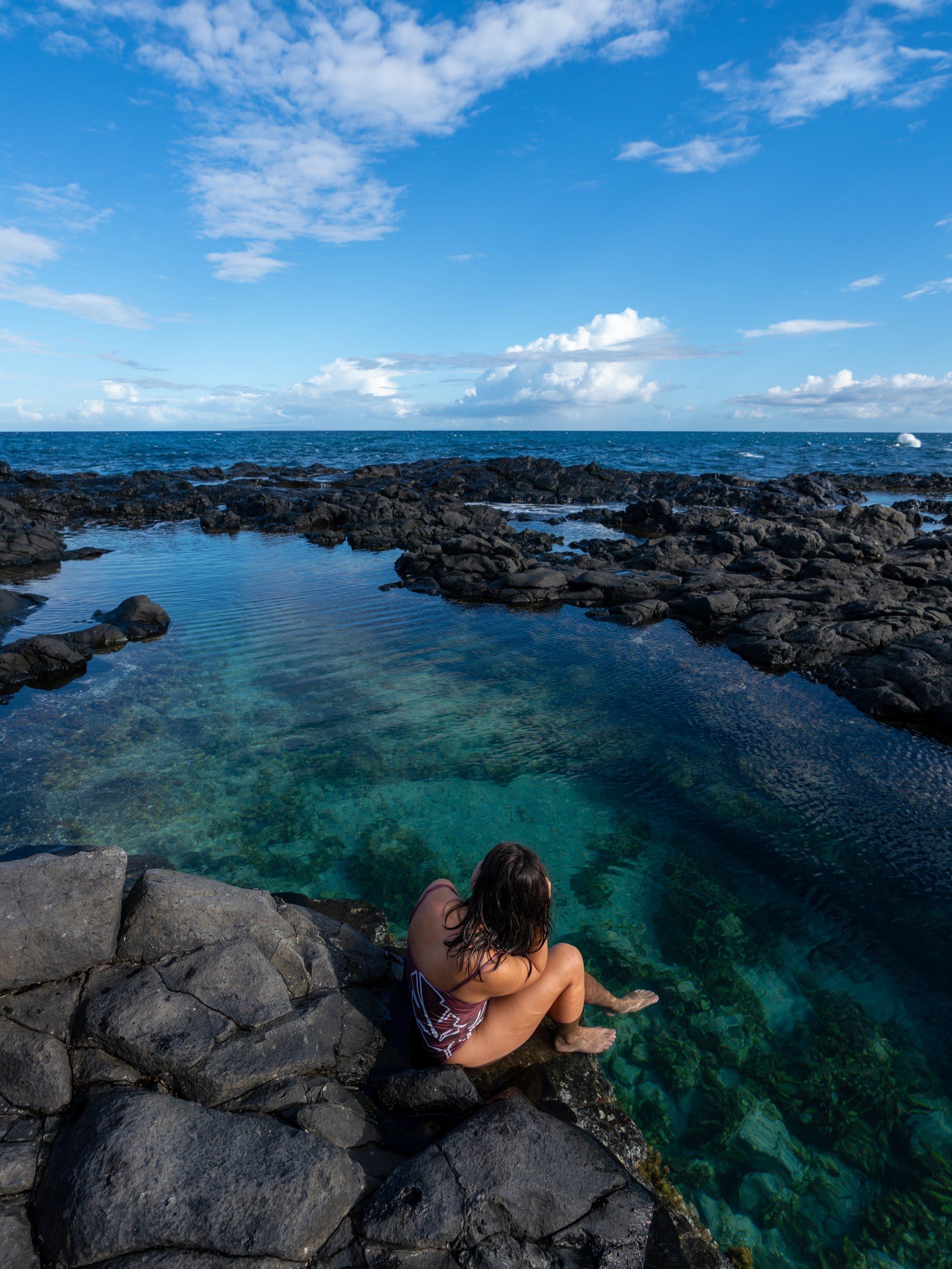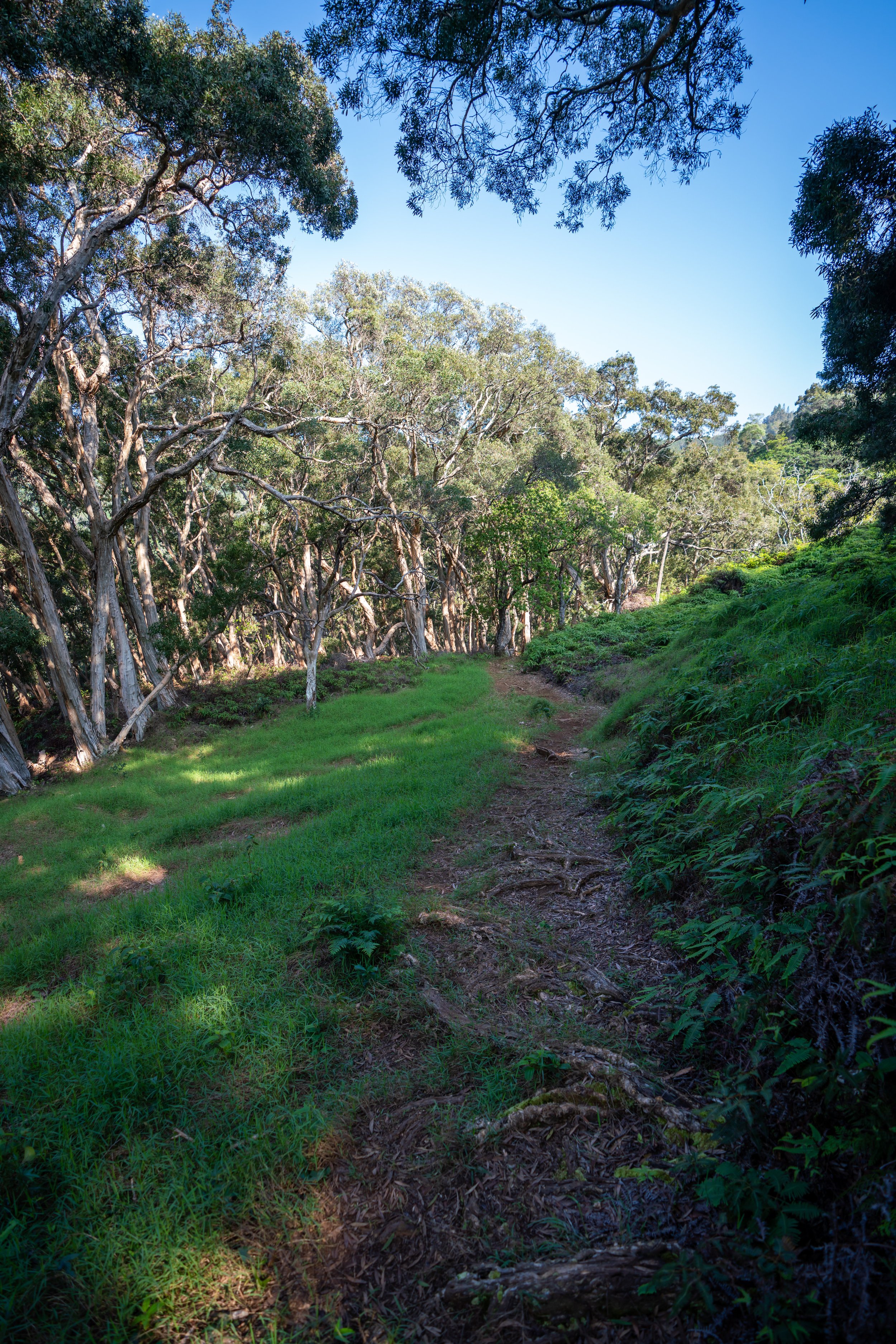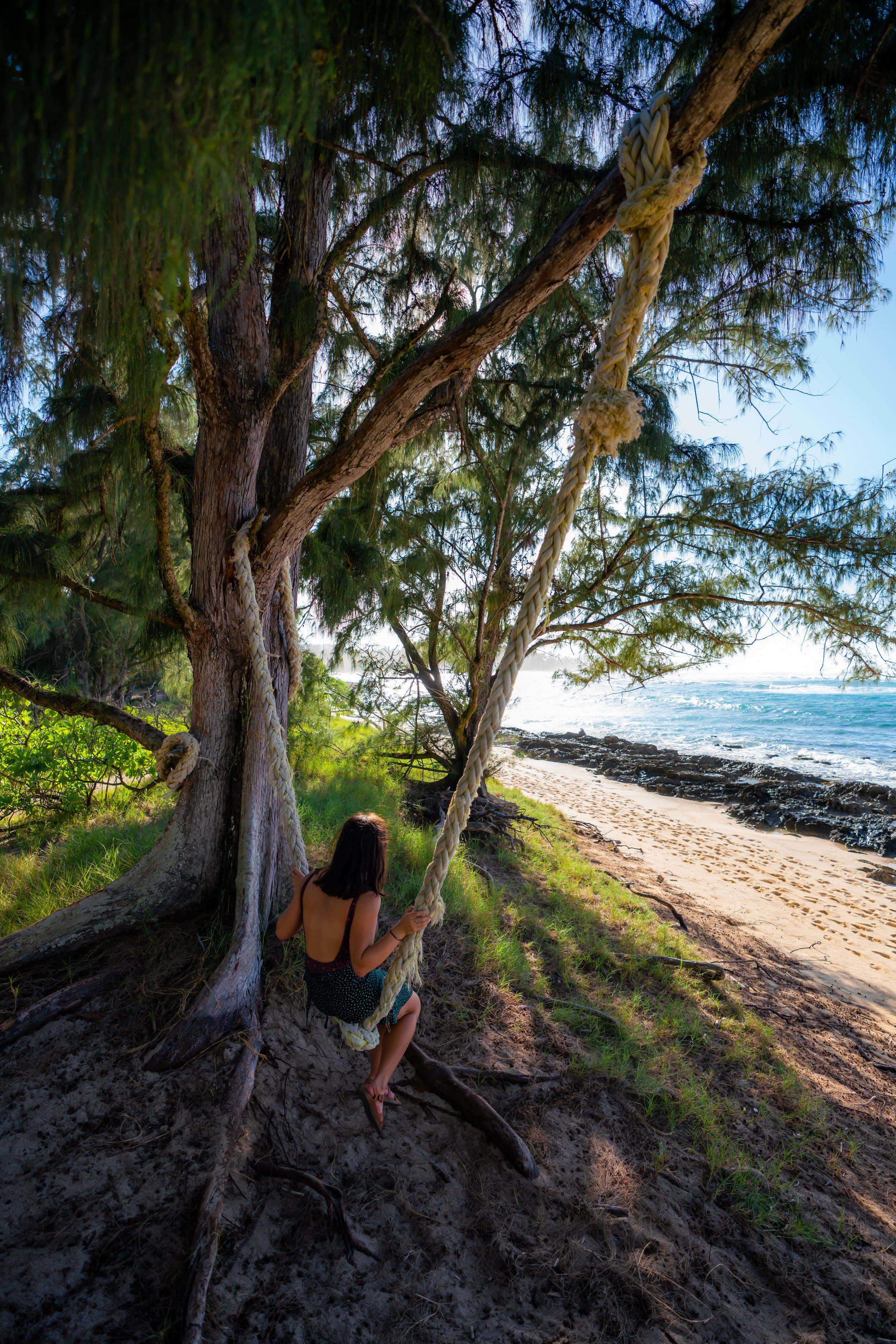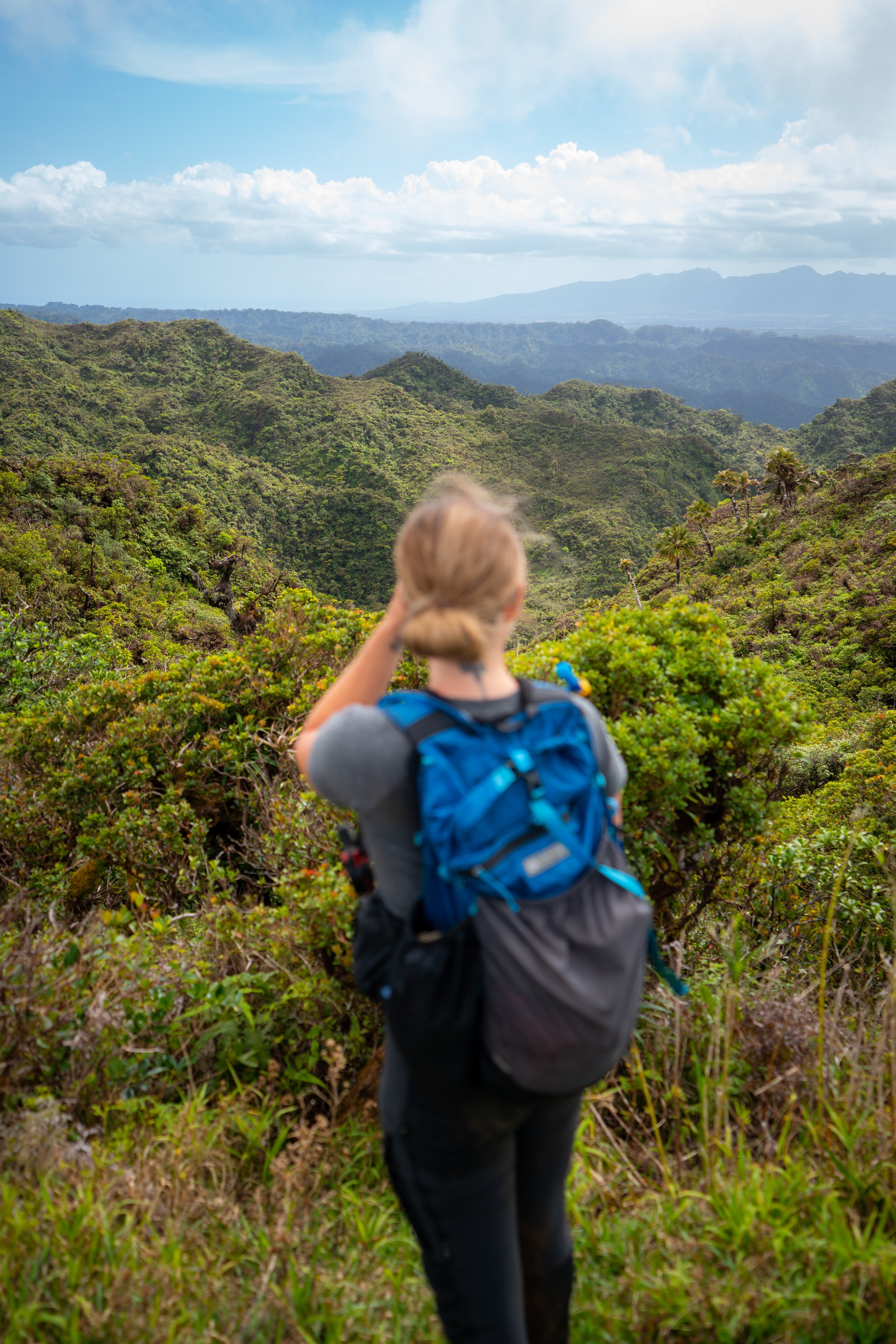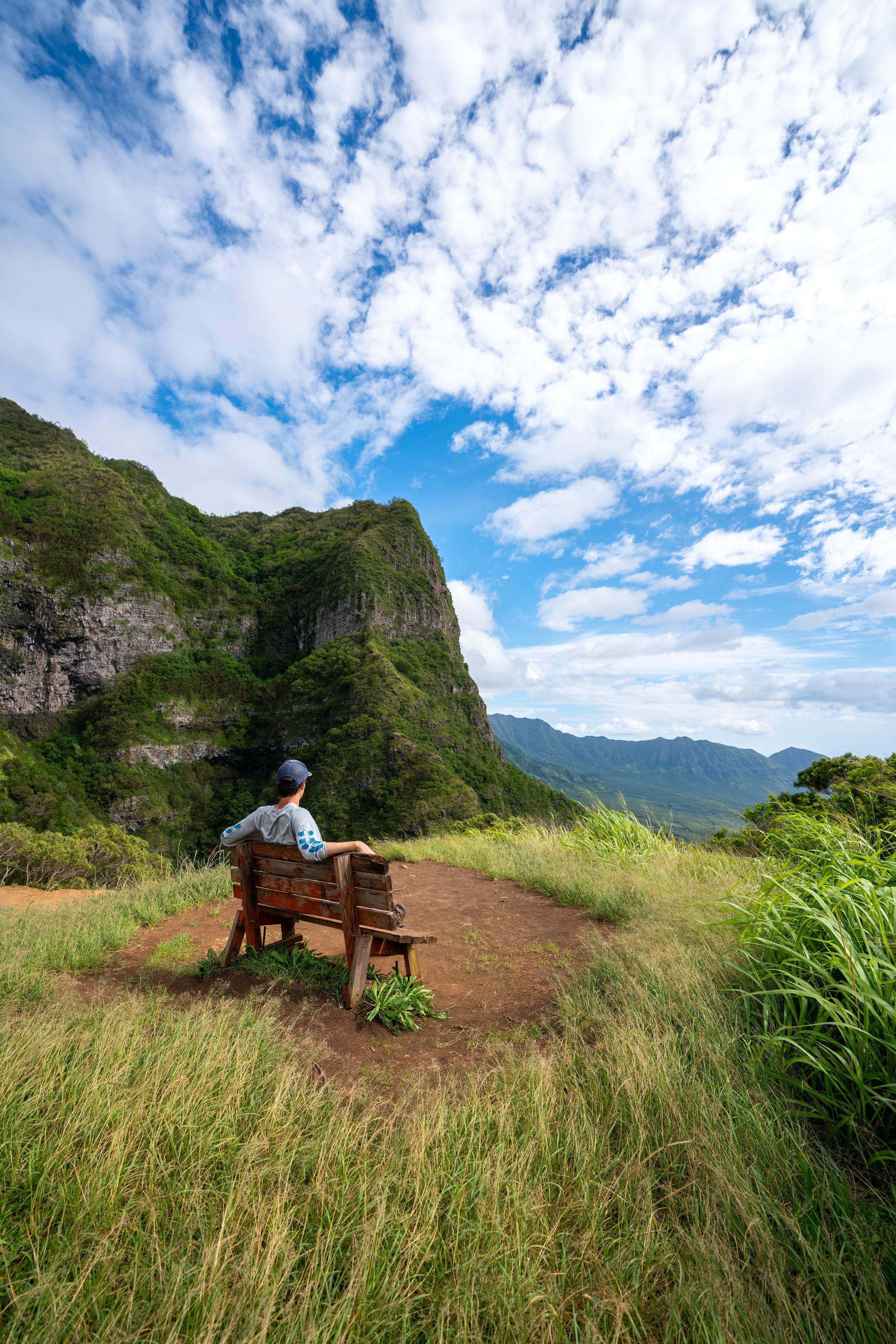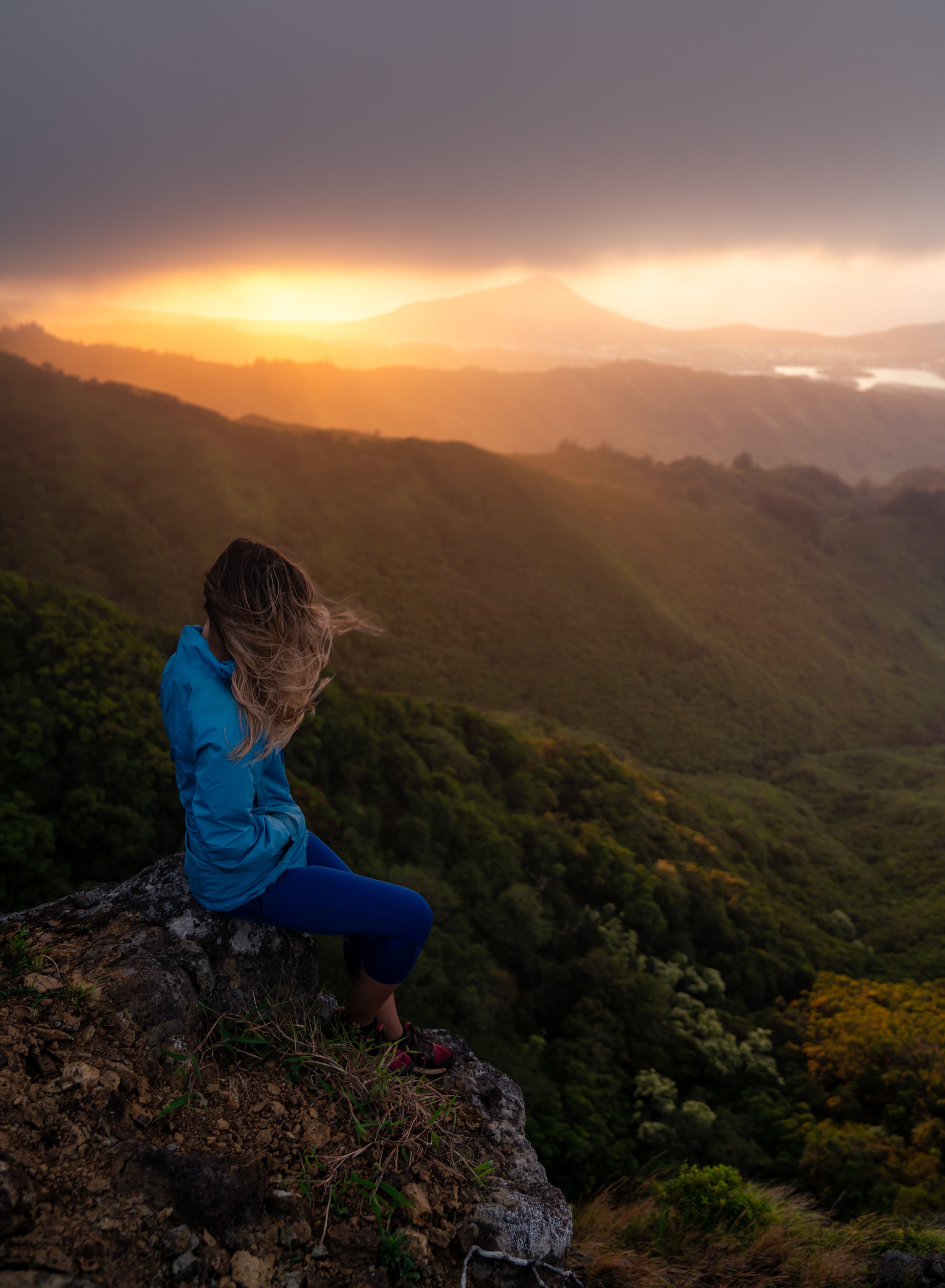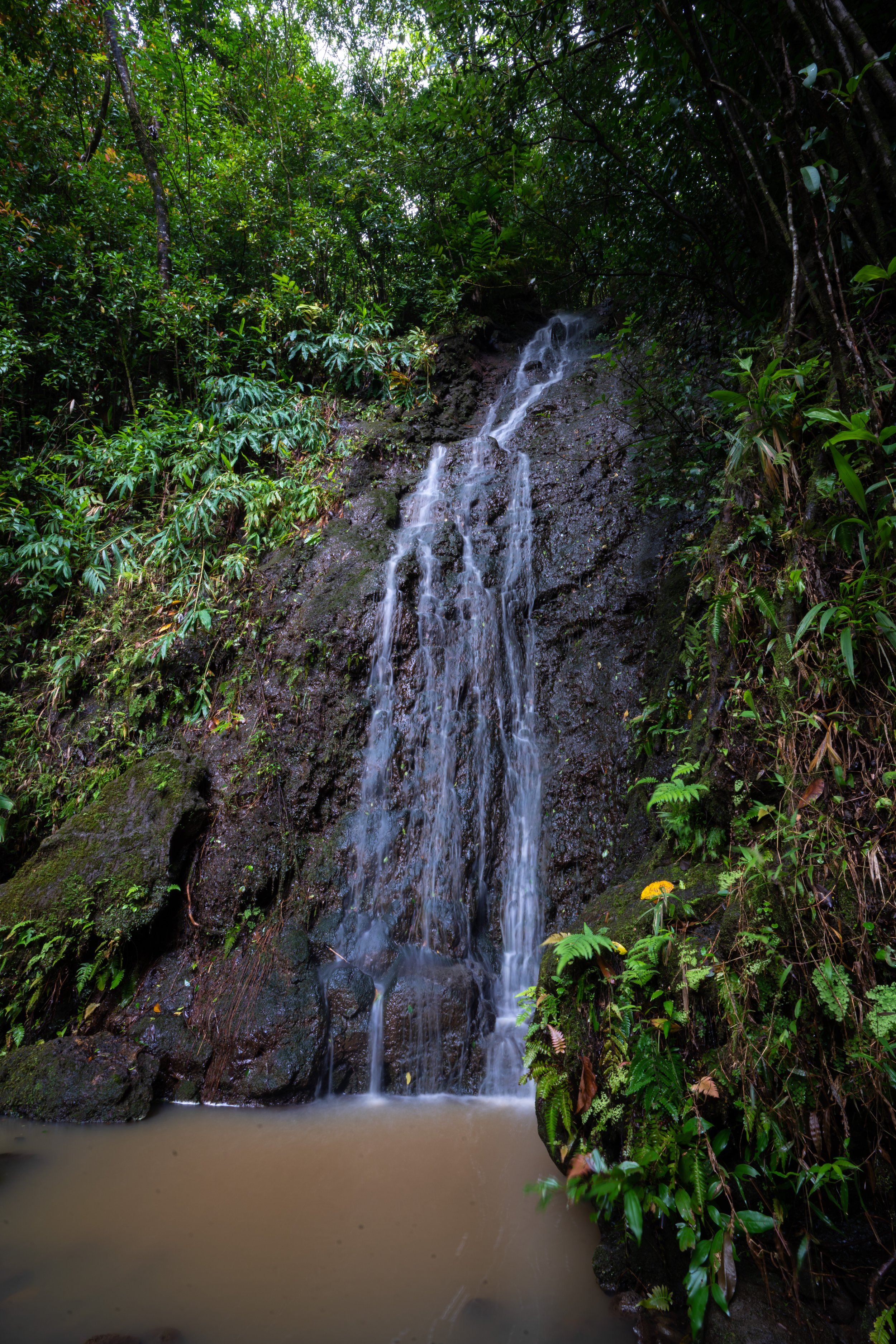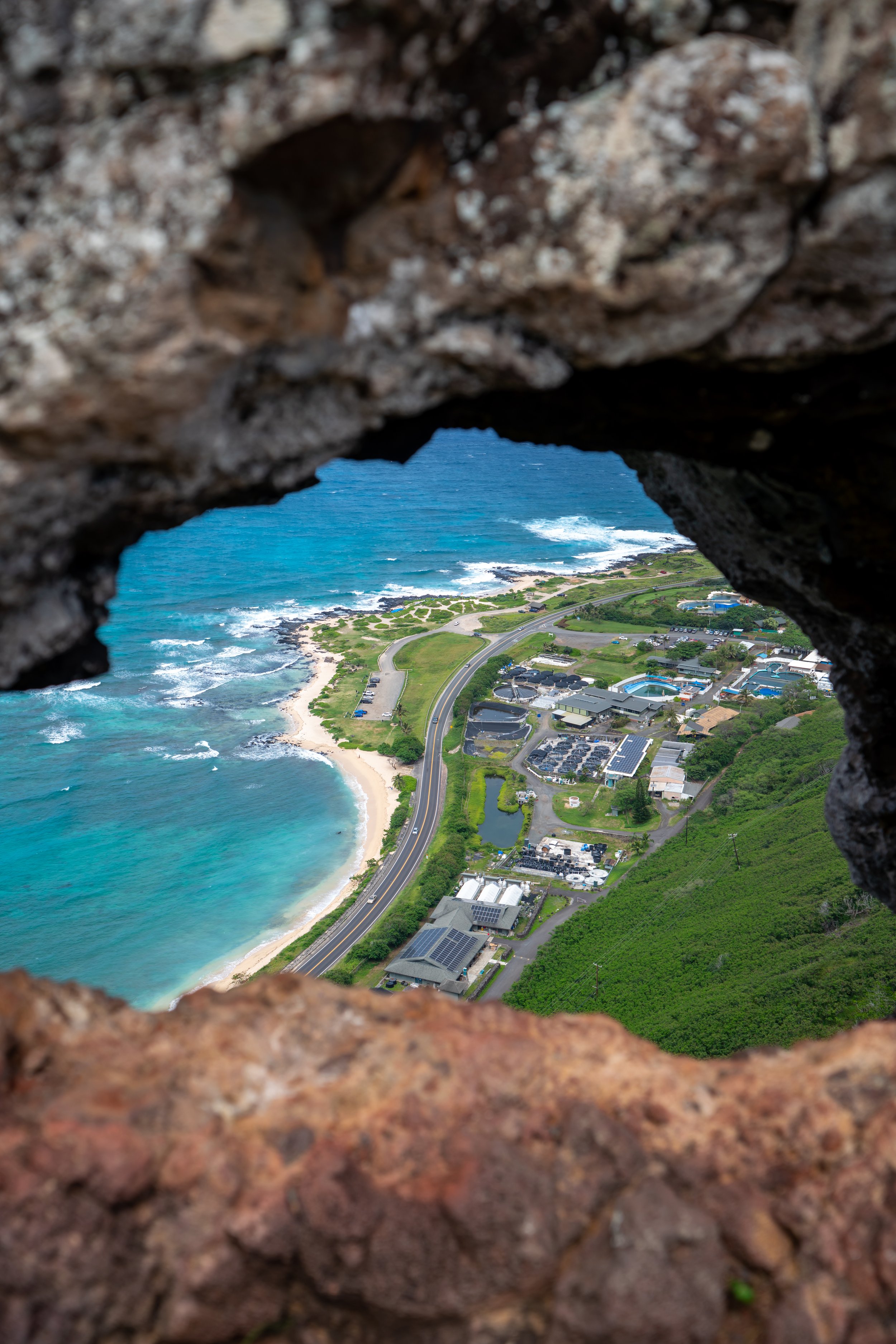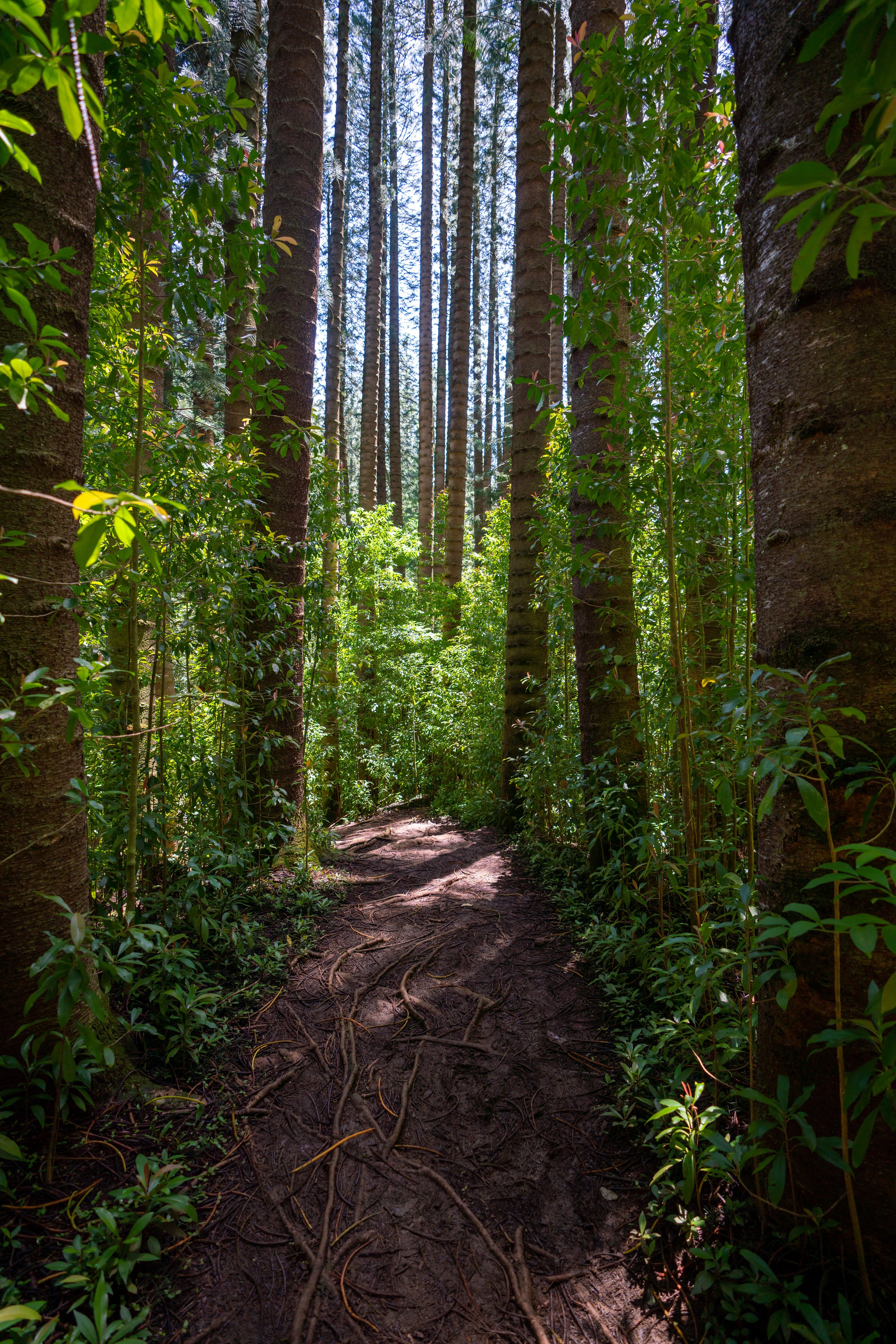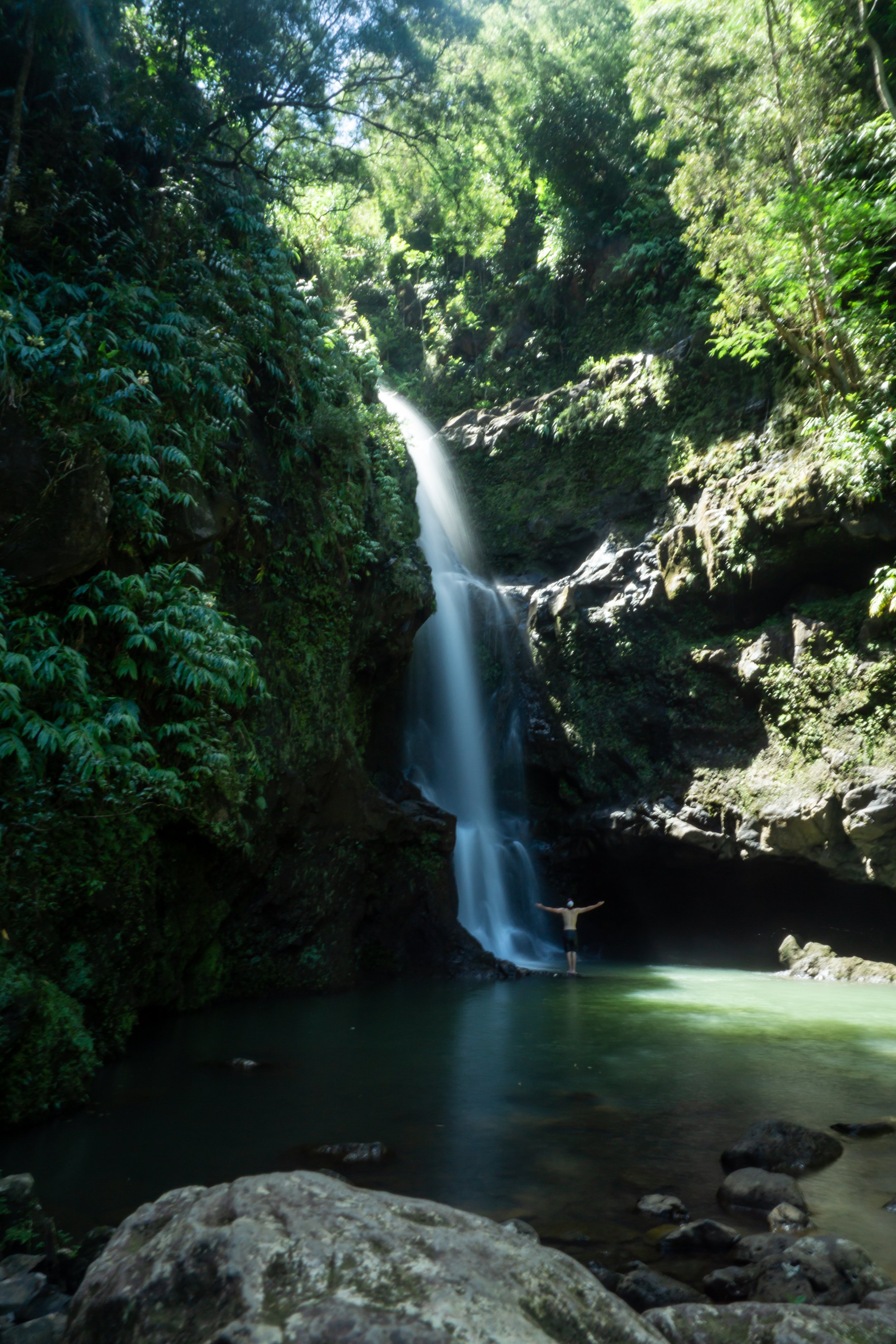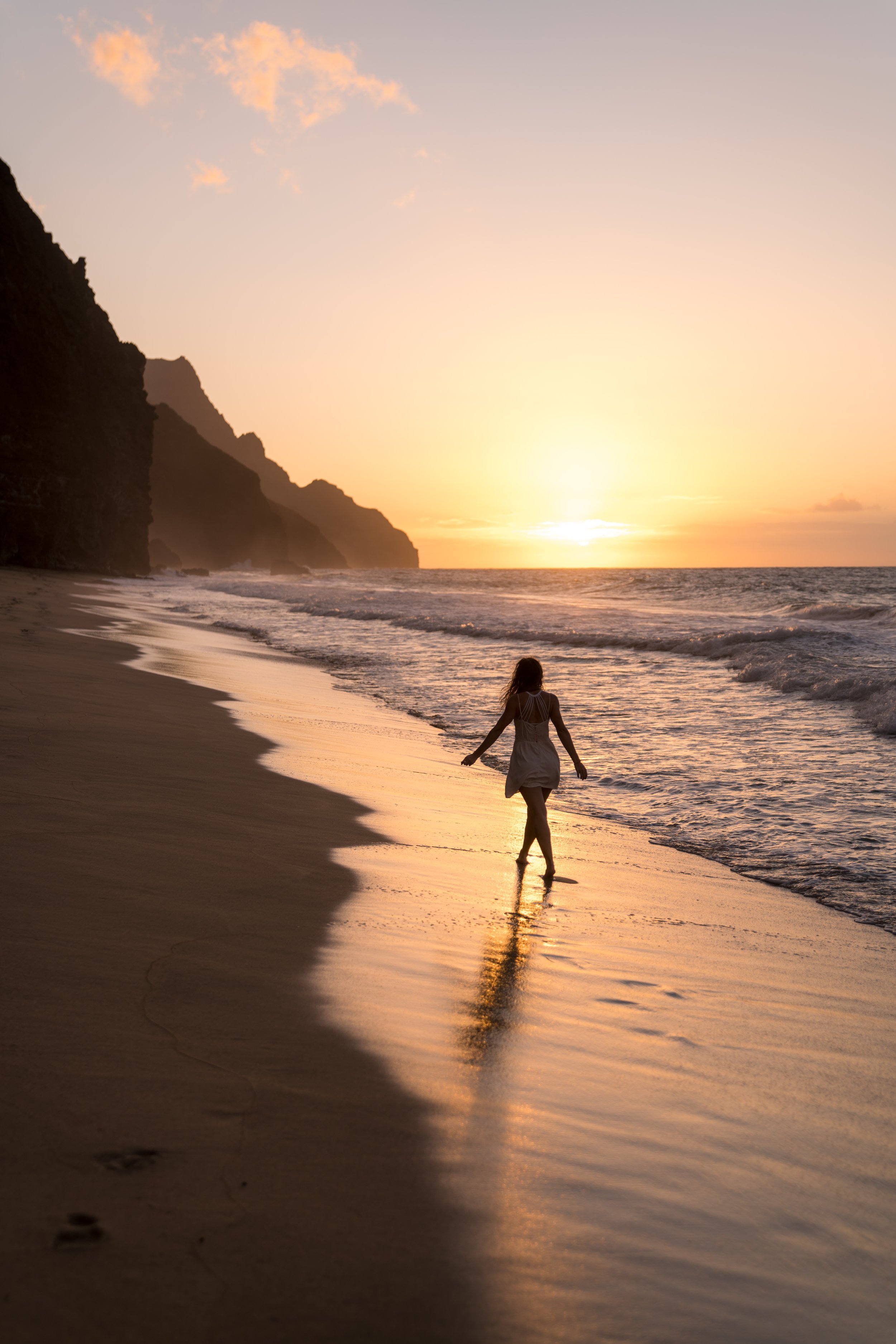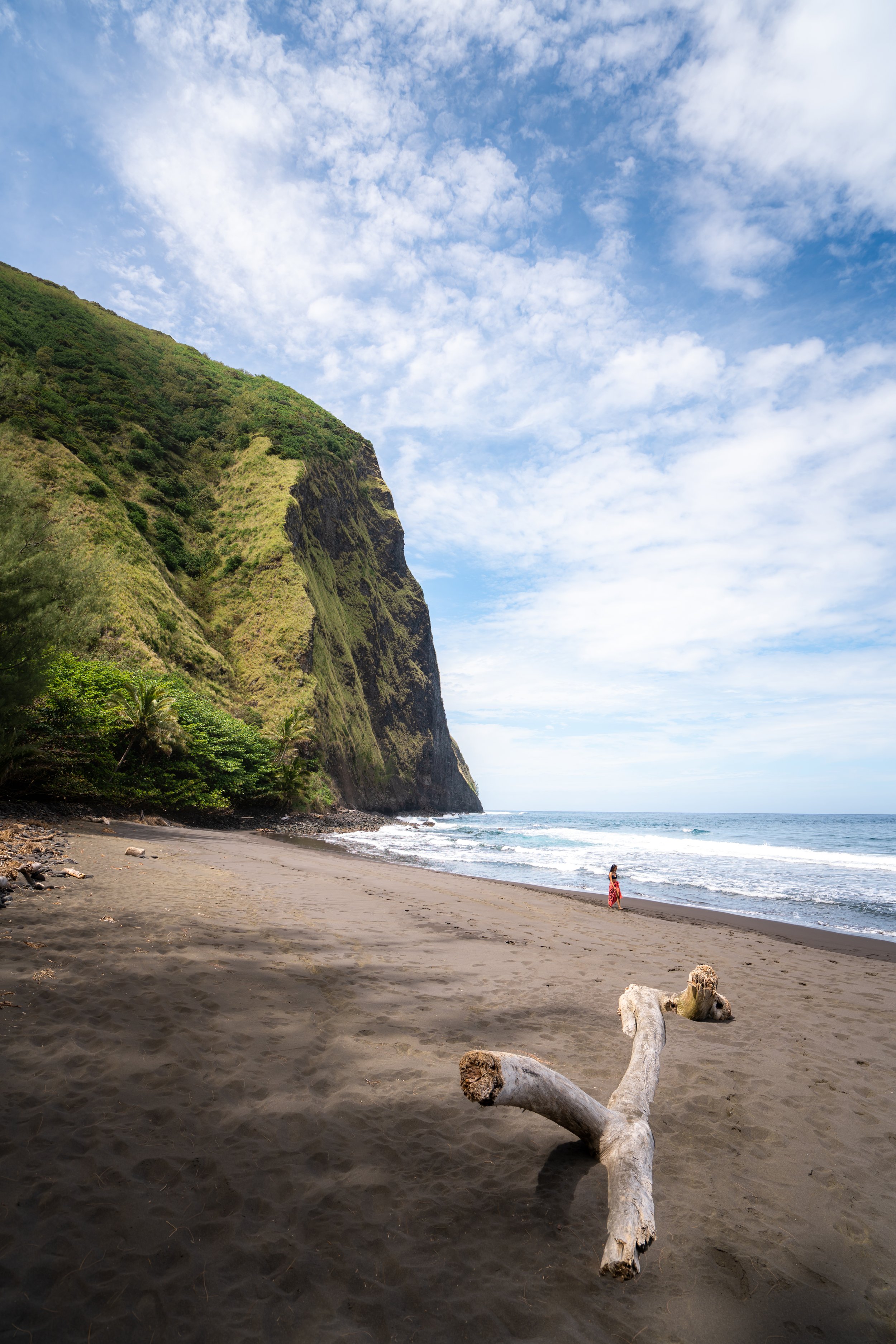Hiking the Schofield-Waikāne Trail on Oʻahu, Hawaiʻi
Distance (Roundtrip): 14.0 miles / 22.5 km
The Schofield-Waikāne Trail, in the central to northern Koʻolau Mountains, is truly an Oʻahu hidden gem, as few hikers ever consider exploring this remote stretch of the island—due almost entirely to the long 14.0-mile (22.5 km) roundtrip distance!
I believe this to be the case because hikers are under the impression that gaining access to the trail is a headache and that the long, remote trail must be difficult. However, Schofield-Waikāne is a much easier adventure than comparable Oʻahu ridge hikes, such as Mānana Ridge or the long Waimano Trail, and accessing the trail is much more straightforward than other information online would lead you to believe.
How to Access the Schofield-Waikāne Trail?
If you ever ended up on the Army’s hiking website, it would tell you that you need to request permission in order to access the Schofield-Waikāne Trail. This is wrong!
According to an in-person conversation I had with the Oʻahu Branch Manager for the Division of Forestry and Wildlife, you do not need to request permission, and you do not need to hike on weekends only.
Hike the Schofield-Waikāne Trail whenever you feel like it, but know that just because the Department of Land and Natural Resources (DLNR) feels this way, as the ones who manage the trail, doesn’t mean the Army is necessarily on the same page. More on this later.
The branch manager was under the impression that if you wanted to be able to drive through the Army base in order to cut out the first few miles of the hike, then you would need a permit. However, as long as you’re starting from the trailhead at the top of California Ave., which is what I recommend, you are free to hike the Schofield-Waikāne Trail as you please!
Schofield-Waikāne Trailhead Parking
Parking for the Schofield-Waikāne Trail is located either at the top of California Ave. and the adjacent Puninoni Street. Alternatively, if you went through the hassle of mailing in a written request to the Army, you could park at the true Schofield-Waikāne Trailhead, cutting out about 2.4 miles (3.9 km) off the hike each way.
As I’m sure you can tell from the previous section, I recommend the first option, which is also the same trailhead as the Wahiawā Hills Trail.
Google Maps Directions: Schofield-Waikāne Trailhead
My Hawaiʻi Hiking Checklist
Osprey 3L Water Bladder - The Osprey 3L water bladder is the most universal hiking and backpacking water bladder on the market, and it’s my go-to because of the slide-off seal that allows it to be quickly filled from the top. Additionally, individual parts are easily replaceable, such as the bite valve.
Blister / Heel Protectors - I swear by these cheap, amazing heel protectors to prevent blisters for nearly every kind of hiking and backpacking that I do!
Black Diamond Headlamp - Personally, I recommend the Black Diamond Storm because it is one of the brightest, lightest, and longest-lasting headlamps on the market—and trust me, the weight-to-battery-life ratio really does matter!
Hiking / Trail Running Shoes - Depending on the type of trail, I prefer to use either the Keen Targhee for longer, more rugged hiking or the HOKA Zinal Trail-Running Shoe for lighter, less intense trails. In either case, both have been amazing to me for many years across countless environments, and both can be found in men’s and women’s sizes. - (Men’s Keen / Women’s Keen) (Men’s HOKA / Women’s HOKA)
Waterproof Rain Shell - You never know when it may rain, and I’ve learned over the years that a rain shell is far better than a rain jacket. By this, I mean that it’s best to have something that the water will roll right off of, which is why I recommend the Patagonia Torrentshell 3L available in both men’s and women’s sizes.
High SPF Sunscreen - Packing high-SPF sunscreen is a must for long days outside!
Hiking the Schofield-Waikāne Trail
As previously mentioned, the Schofield-Waikāne Trail is most comparable to Mānana Ridge in central Oʻahu.
However, in my opinion, Schofield-Waikāne is the easier of the two, regardless of the fact that it’s significantly longer.
I say this for a few reasons. First, about a third of the total distance up the ridge is on the access road just to reach the real trailhead, meaning Schofield-Waikāne is closer to a 9.0-mile (14.5 km) hike than a 14.0-mile (22.5 km) hike. The second is that the Mānana Ridge Trail follows the actual ridgeline, while Schofield-Waikāne almost always contours around any steep elevation gain, making the hike much more gradual in comparison. This why people call Mānana a rollercoaster, while Schofield-Waikāne is not.
In any case, the Schofield-Waikāne Trail begins at the very end of California Ave., which is also the same trailhead as the Wahiawā Hills.
At the first split, it doesn’t matter which way you go. They both meet up shortly after.
Wahiawā Hills-Schofield-Waikāne Junction
Then, after 0.1 miles (0.2 km), the Schofield-Waikāne and Wahiawā Hills Trail split.
Go right to stay on the Schofield-Waikāne Trail.
After the Wahiawā Hills Junction, the Schofield-Waikāne Trail will come to a number of splits with the Schofield-Waikāne Access Road.
To the best of my knowledge, this road is the border between the ʻEwa Forest Reserve and the Army base, which is where I believe the point of conflict is, with the Army saying that you need permission and the DLNR saying that you don’t.
In either case, I always choose to go left at the first few splits until I’m well past all of the Army buildings, so that I’m never confronted over this technicality.
I don’t think it would be very fun to have some know-it-all Army personnel telling you they know better, and I’m sure you won’t be able to tell them that you learned this information about the trail’s access from my blog.
Schofield-Waikāne Access Road
At some point past the Army buildings, turn right off the trail and onto the road.
If you come to a trail heading downhill while paralleling the access road, don’t follow it. That’s a good time to leave the trail and join up with the access road.
Schofield-Waikāne Junction
After the buildings, the access road will pass by a few training areas before breaking off toward the true Schofield-Waikāne Trailhead, past this gate.
From the gate, the access road is a bit of a long walk until you reach the upper parking area, about 2.4 miles (3.9 km) from the trailhead on California Ave.
Schofield-Waikāne Trailhead Parking
After 2.4 miles (3.9 km), the Schofield-Waikāne Access Road finally reaches the true Schofield-Waikāne Trailhead, which is why some trail reports will only say the roundtrip distance is only 8.0 miles (12.9 km).
However, in my own recordings, I tracked 9.2 miles (14.8 km) roundtrip.
Schofield-Waikāne Trailhead
I’m not sure where the sign went, but this path on the mauka side of the upper parking area is the Schofield-Waikāne Trailhead.
From here, the one-way distance to the summit is 4.6 miles (7.4 km), which is considerably different from what the DLNR reports at 4.0 miles (6.4 km) each way.
Initially, the Schofield-Waikāne Trail drops down before beginning the gradual ascent up the roughly 700 ft. (213 m) of elevation from the upper trailhead to the summit.
I love all the beautiful ʻAhakea trees that you can see on the trail!
If you don’t have an eye from Hawaiʻi’s native forests, I’d tell you that the Schofield-Waikāne Trail is pretty special compared to how overrun other Hawaiʻi hikes can be with invasive species.
As you can see from these photos, whenever the Schofield-Waikāne Trail gains elevation, it almost never follows the ridgeline directly.
That's why the elevation gain feels so mild over the course of this longer trail.
This sign for the ʻEwa Forest Reserve is a nice mental checkpoint that you’re about halfway up Schofield-Waikāne from the upper trailhead.
North Kaukonahua Management Unit
For about the remaining upper third of the hike, the Schofield-Waikāne Trail follows along the southern boundary for North Kaukonahua MU, which helps make the hike easier, as this stretch of the trail is typically better maintained.
That being said, when I say maintained, I don’t mean no overgrowth, as these upper portions of the trail are really why you’re going to want to wear good hiking pants.
The pants below are my recommendations that hold up the best with the overgrowth here in Hawaiʻi, but with any hiking pants that need to be durable, make sure that they are at or near 100% nylon. This is really the most important factor!
Shortly after the fence begins the trail leaves it behind to contour around the next hill, which does get a little more overgrown than the fence line itself.
However, whenever the Schofield-Waikāne Trail leaves the fence, it always joins back up again until the section just below the summit.
As the Schofield-Waikāne Trail moves higher, the summit may look further than it actually is, like in the photo below.
However, if you’re trying to estimate how much further the trail goes, I recommend looking at the mountains to the north because it’s a much more accurate estimation than looking to the south.
This is about the steepest the Schofield-Waikāne Trail gets, and it never lasts very long.
As the trail gets closer to the KST, there are a few hills that almost directly block the view of the true Schofield-Waikāne Summit.
However, like I previously said, the mountains on the left (north) give you a better estimation of the remaining distance as opposed to how far away the summit ridge to the south looks in the photo below.
These ʻOhe Mauka trees are another one of my favorite Oʻahu endemic plants, and I love seeing them all over the remote Koʻolaus, as they are truly few and far between across the southern ridges.
Just prior to the summit, the Schofield-Waikāne Trail leaves the fence behind, which won’t continue again unless you choose to hike north toward Poamoho on the Koʻolau Summit.
If you notice a split in the trail just prior to the summit, go right to stay on the trail.
The path on the left is nothing worth following.
Schofield-Waikāne Summit
After about 7.0 miles (11.3 km) from the trailhead on California Ave., the Schofield-Waikāne Trail ends at this panoramic view of Kahana Valley to the north, Puʻu ʻŌhulehule in the center, and Waiāhole Valley to the south.
This photo was taken at sunrise from the summit.
In any case, I recommend looking for the nicest day possible to hike Schofield-Waikāne because with all the effort put in to reach this remote summit, it would be kind of a letdown if the view was socked in.
Personally, I’ve had great luck with clear views all three times I’ve visited thus far, and I credit that mostly to choosing the nicest of nice days to set out on Schofield-Waikāne.
If you plan to continue in either direction along the Koʻolau Summit Trail (KST), note that the best trails down in each direction are Poamoho to the north and Mānana Ridge, a long way to the south.
Read My Separate Post: Koʻolau Summit Trail (KST)
Native Plants - Schofield-Waikāne Trail
The Schofield-Waikāne Trail is one of the best trails on Oʻahu to see a variety of native Hawaiian plants, which include ʻŌhiʻa lehua, ʻŌhiʻa lehua mamo, ʻAhakea lau nui, Akaʻawa, Kalia, Naupaka, Alani, and Kōpiko, to truly name only a few.
If you would like to learn more about these and many other native Hawaiian plants from across the islands, I encourage you to check out my separate post linked below.
Read My Separate Post: Native Hawaiian Plant Guide
More Oʻahu Adventures
If you’re interested in reading about some more amazing Oʻahu adventures, check out my separate posts below!
Best Hotels & Restaurants in Waikīkī
If you’re trying to decided where to stay on Oʻahu, check out my top 10 list for the best resorts and restaurants in Waikīkī.
I break down what makes one hotel a better choice over another, so that you can find the best fit for your stay on the island.
Read My Separate Post: Best Waikīkī Hotels & Restaurants
HNL Airport-Hotel Shuttle
Prices on ride-share apps like Uber/ Lyft cannot beat the price of booking your hotel shuttle prior to arrival. I say this because there are additional fees for ride-share airport pick-ups at Honolulu Airport (HNL), which is why I recommend booking your transportation in advance using the options below.
Additionally, the last option below will go as far as the Ko ʻOlina Resorts on the West Side and Turtle Bay on Oʻahu’s North Shore!
Best Way to Book Rental Cars!
I travel quite a bit, and I know firsthand that finding a good rental car deal can be a challenge, but that’s why I recommend comparing all of your options with Discover Cars.
In short, Discover Cars is a well-known, reputable business that allows you to search for the best deal across companies, and they have the best full-refund cancellation policy I’ve ever seen, valid up to 72, or sometimes even 48, hours prior to your reservation!
Book Here: Discover Cars
Visiting Other Islands
If you are visiting Oʻahu or heading to another island, check out some of my personal recommendations for Oʻahu, Maui, Kauaʻi, Molokai, Lānaʻi, and Hawaiʻi Island (Big Island) in these separate posts.
If you’re trying to decide which island is right for your visit, check out my overview about each island in the post below.
Read My Separate Post: What is the Best Hawaiian Island to Visit?
What is the Best Time of Year to Visit Hawaiʻi?
The weather in Hawaiʻi can often appear to be warm and beautiful throughout the year, but in my experience, there is a lot more to consider when planning what time of year to visit the islands, such as what island you are considering, what sides of each island do you plan to stay, what activities are you most interested in, the wildlife, and countless other nuanced variables that can all impact the type of trip you can expect to have.
For these reasons, I highly recommend reading through my separate article to not only understand my thoughts regarding the best time of year to come to Hawaiʻi but also what you need to consider based on the time of year that you plan to visit.
Read My Separate Post: What is the Best Time of Year to Visit Hawaiʻi?
10 Best Tours & Excursions on Oʻahu
There are a lot of different tour options to choose from on Oʻahu, but to make it easier to decide, I made a list of my favorite tours because some things simply are better with a local guide!
Read My Separate Post: Best Tours on Oʻahu
Safety
All hikes in Hawaiʻi should not be compared to trails outside of the islands, and hikers should exercise due caution on every adventure, given that many are extremely dangerous.
By this, I mean that Hawaiʻi is known for hot, humid weather, steep, dramatic, and unstable cliffs, and flash floods, which can occur without warning. Therefore, it is important that you check the local forecast, understand the physical condition of your entire group, and pack sufficient food and water before attempting any adventure.
Disclaimer
All information provided on this blog is for informational purposes only and is not intended to be a substitute for information or advice from qualified professionals or managing agencies.
Noah Lang Photography LLC makes no representations or warranties regarding the accuracy or completeness of the information provided here, and readers should use their own discretion, judgement, and seek professional advice where it is appropriate.
Furthermore, Noah Lang Photography LLC shall not be held responsible for any injuries, lost individuals, or legal issues arising from the use of information provided on this website, and if applicable, the above safety disclaimer should be referenced to provide a generic overview of the risks involved.
All said, the content on this blog is for the sole use of Noah Lang Photography LLC, and unauthorized use or reproduction of this content is strictly prohibited.
Disclosure
This post is not sponsored.
However, some of the links in this post are affiliate links, which means that I may earn a small commission if a purchase is made through one of those links. This commission comes at no additional cost to you, and I only recommend products that I personally use and believe will add value to my readers. Thank you for your support, which enables me to continue creating more!
To read the full privacy policy, click here.

About This Blog
Noah Lang Photography, also known as @noahawaii, is 100% reader-supported!
I do not accept guest articles or sponsored content of any kind on my blog, which is why, if you enjoy the outdoor and travel content I create, please consider buying me a coffee!
I appreciate your support, which helps me continue to keep this blog alive!










